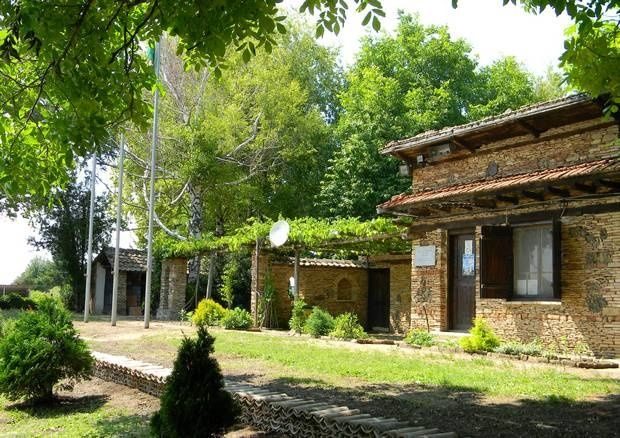

Pavlikeni Antique Ceramic Centre was discovered in 1971 when a ceramic baking oven dating back in the ancient Roman empire was revealed near the city. Later, a total of 8 ovens were discovered. A lot of ceramic objects were found on the location contributing to the study of that era ceramic. The Antic Centre is the first open space museum.
The architectural complex near Pavlikeni was created at the end of 1st century AD, before the establishment of Nikopolis ad Istrum city, after Traian’s Dacian Wars. At that moment in Nove (presently Svishtov city) was already established a military camp for the 1st Italian Legion. After ending their military service some of the solders returned to their home country but others remained in the region and established in the fertile valley of Rositsa river. Most probably this is how the villa near Pavlikeni, one of the many in the region, appeared. The region is crossed by the main roads connecting Moesia province (later known as Lower Moesia) with other areas of the Roman Empire. This is how it is explained the existence of several halts, villages, villas, temples and artisanal centres.
The central villa near Pavlikeni city (Rustic Villa – Central Area) covers a surface of 4100sqm and has an irregular rectangular shape. Around the colonnades enclosure there are a lot of linked spaces and in the lower yard were found two wells which supplied with water all the buildings.
However, what is unique and special about the Roman villa near Pavlikeni are the ovens, perfectly preserved and exposed. 50 ovens were studied confirming the theory that here they produced ceramic not only for the use of the local community but also for selling them. Local workshops were discovered in the military legions, the urban administrative center Nikopolis ad Istrum, in several villages of Moesia and Tracia regions, in some cities from Dacia and even in Crimean Peninsula.
The presence of numerous ceramic ovens and products and tools of old craftsman in the workshops discovered, offers the possibility to explore the manufacturing of antic ceramics. It is a long and complicated process sustained by the natural deposits of clay in the area. During the researches of the edifice were found pottery objects, terracotta lamps, toys tin ornaments, rings and bracelets, marble votives, different agricultural tools and other objects. The antique ceramic centre is the most studied site in South-East Europe.
The researcher Bogdan Sultov transformed it since 1970 in the first open space museum in Bulgaria. He recreated the entire production process of antique ceramic. Everything was dug out of the ground and then the archaeologist transformed the construction materials, so that now all the buildings from the area are completely authentic. Bogdan Sultov worked there starting with 1971 until his death in 1982, and after that the researches were stopped.
